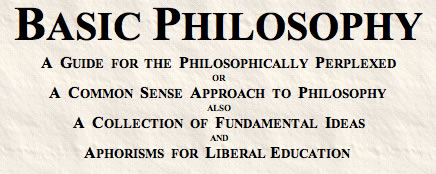
What more could you want? This site has all the wisdom in the world, and provides a great way to waste an hour too.
I came across this site today called Basic Philosophy as I was doing some research (some days I do a lot of research). This one is a project done by a self-described ‘retired canadian former bridge-builder’ named Phil. It’s the history of philosophy wrapped in a dialectic hidden in an aphorism. More to the point, this page is a classic way to burn through a lunch hour.
Consider, for example, argument number 20 (out of 581):
______________________________
LOVE & FRIENDSHIP
IS FRIENDSHIP THE HIGHEST LOVE?
You can’t love what you don’t know.
but
We only know someone through friendship. (St. Augustine)
and
The bond of companionship, both in marriage and friendship,
is conversation. (Oscar Wilde)
______________________________
Don’t like that one? Don’t worry, there are 580 more.
Phil’s biggest efforts seem to go into advocating for a universal basic income. He says the following:
Capitalism is based on the principle of competition. People must work hard in order to succeed. But many people, through no fault of their own, are ill-equipped to live in such a competitive world. If we think it wrong to discriminate on the basis of race, creed or colour, why do we tolerate economic discrimination on the basis of energy, academic aptitude, or the motivating desire for wealth? It’s up to the victims of our economy, and their sympathizers in the middle class, to point to the obvious injustice in much of modern economic practice, as well as to the historic change underway in the nature of work. Though it may be delayed the day is coming when our society will agree with John Kenneth Galbraith, ‘Everybody should be guaranteed a decent basic income. A rich country…can well afford to keep everybody out of poverty.’
There’s something I like about this guy…
 Today’s Christian Science Monitor has an article entitled
Today’s Christian Science Monitor has an article entitled 


 I alway liked Snickers. Good candy bar, a peanut in every bite and all that. But I guess I’m gonna have to give ’em a break for a while.
I alway liked Snickers. Good candy bar, a peanut in every bite and all that. But I guess I’m gonna have to give ’em a break for a while.  In an article in today’s Denver Post entitled
In an article in today’s Denver Post entitled  Last weekend’s Iron Pour at
Last weekend’s Iron Pour at